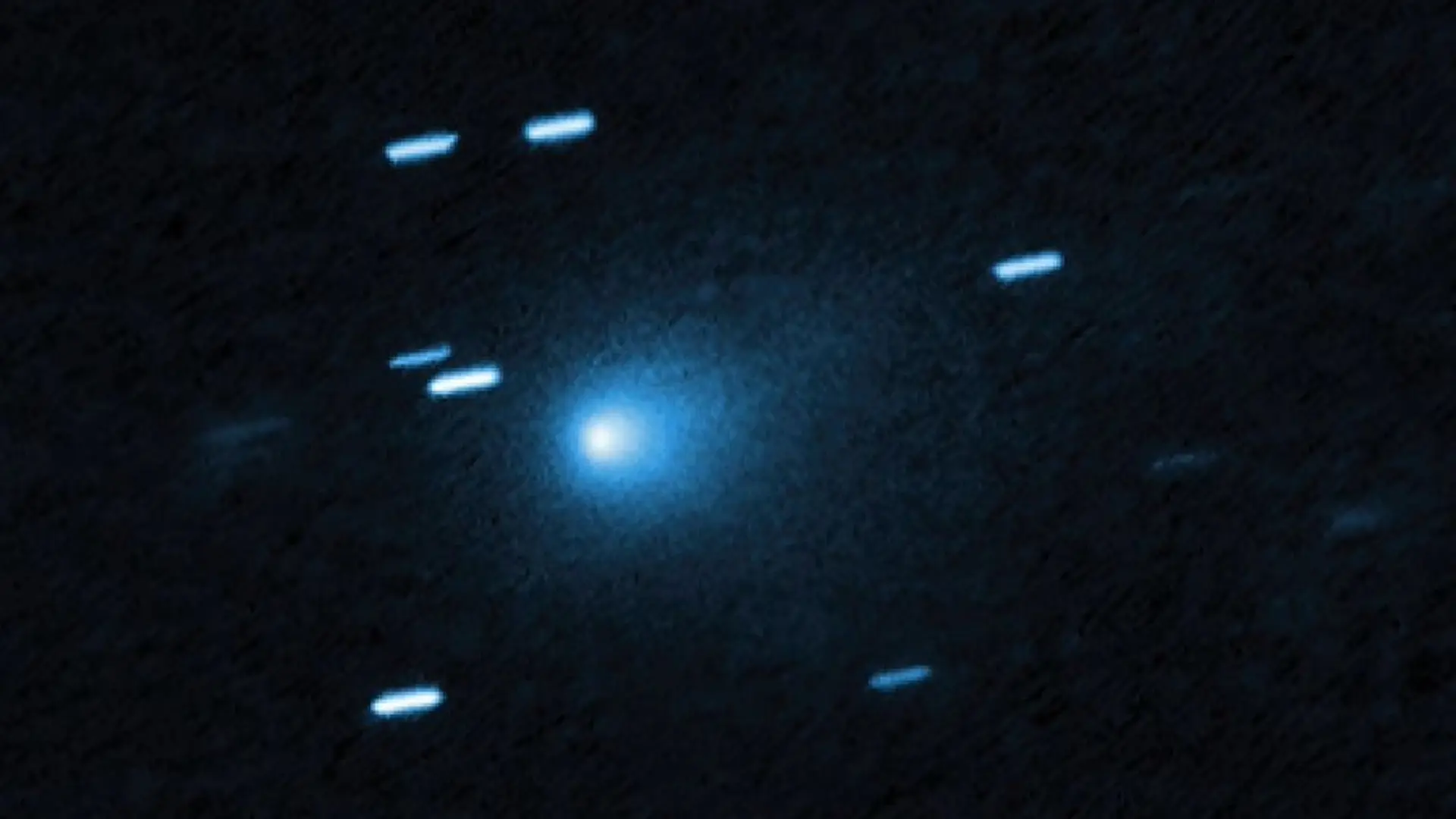3I/ATLAS shines brighter and bluer during its approach to perihelion
-
 Interstellar comet 3I/ATLAS (Image via NASA)
Interstellar comet 3I/ATLAS (Image via NASA)Harvard physicist Avi Loeb published a new article on Medium on October 30, 2025, drawing attention to a recent study by researchers Qicheng Zhang and Karl Battams, which reported observations of interstellar object 3I/ATLAS from various instruments during the months of September and October 2025.
According to the data collected, 3I/ATLAS showed a rapid rate of brightening. Additionally, it showed the interstellar object becoming bluer than the Sun as it neared perihelion.
The new images obtained by the researchers added a new dimension to people’s understanding of the 3I/ATLAS.
Presently, the interstellar object is hidden from human eyes and terrestrial telescopes as it slipped behind the Sun after going through “solar conjunction relative to Earth on October 21, 2025.”
However, it was still within the fields of vision of certain advanced space-based solar coronagraphs and heliospheric imagers.
As a result, researchers and experts in the community were able to observe and track 3I/ATLAS as it neared perihelion.
Which instruments were used while capturing the latest images of 3I/ATLAS
STEREO, or the Solar TErrestrial RElations Observatory, currently has two spacecraft, both of which were launched in 2006.
STEREO-A, which revolves around the Sun at a slightly faster pace than Earth, and STEREO-B, which orbits at a slower rate than Earth.
Since STEREO-B stopped being an operational spacecraft in 2014, it was only STEREO-A that observed the interstellar object.
“The observations were made by two cameras, HI1 and COR2, on the SECCHI (“Sun Earth Connection Coronal and Heliospheric Investigation”) instrument suite,” Loeb shared.
The SOlar and Heliospheric Observatory carries the LASCO (Large Angle and Spectrometric COronagraph) coronagraphs, which also observed 3I/ATLAS.
Weather satellite GOES-19, which was launched in 2024, operates in a geostationary orbit. It carries the CCOR-1 (Compact CORonagraph 1) coronagraph, which was another instrument that the researchers utilized during their study.
“The new paper reports observations of 3I/ATLAS from STEREO-A’s SECCHI HI1 and COR2, SOHO’s LASCO C3, and GOES-19’s CCOR-1 instruments during the months of September and October 2025,” Loeb pointed out.
The analysis by the researchers showed that there was a significant increase in the brightness of the interstellar object, as it was “scaling inversely with distance from the Sun to the power of -7.5 (±1).”
CCOR-1 detected 3I/ATLAS having a 300,000-kilometer-long glow around itself. It could be compared to the “scale of plume of carbon dioxide.”
Moreover, the latest study reported that 3I/ATLAS appeared to be bluer than the Sun when seen in the LASCO/CCOR-1 color photometry.
Earlier observations showed the interstellar object to have a red color, which was in contrast to the latest findings.
After the perihelion, 3I/ATLAS will return to fields of view from Earth at twilight.
Loeb noted that during the month of December, when 3I/ATLAS is said to be at “closest approach to Earth,” ground-based observations and data from the Hubble and Webb space telescopes will be able to study the interstellar object in depth.
“The new data suggests that 3I/A3I/ATLAS shines brighter and bluer during its approach to perihelionTLAS will likely emerge from perihelion brighter than before,” he pointed out.
However, according to the authors of the research paper, the reason behind the rapid brightening of 3I/ATLAS remains “unclear.”
According to the information provided on NASA official website the assets being used in studying the object include Hubble, Webb, TESS, Swift, SPHEREx, Perseverance Mars rover, Mars Reconnaissance Orbiter, Curiosity rover, Europa Clipper, Lucy, Psyche, Parker Solar Probe, PUNCH, and ESA/NASA’s SOHO and Juice.
Stay tuned for more updates.
TOPICS: 3I/ATLAS, Avi Loeb, 3I/Atlas nearing sun, NASA
- New images show anti-tail of 3I/ATLAS measured at greater length than Earth-Moon distance
- Viewing 3I/ATLAS up close on December 19 – Which telescopes can help
- IAWN uses interstellar object 3I/ATLAS as a test case for future comet exploration
- Why interstellar comet 3I/ATLAS could reshape what we know about planet formation